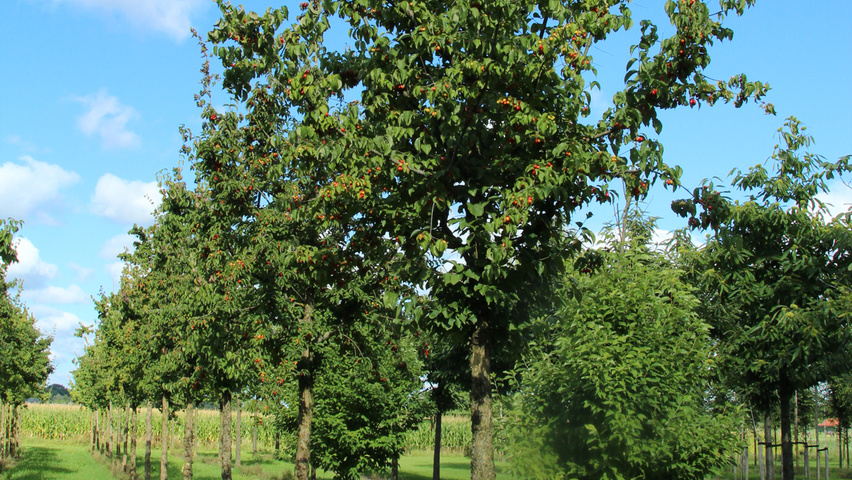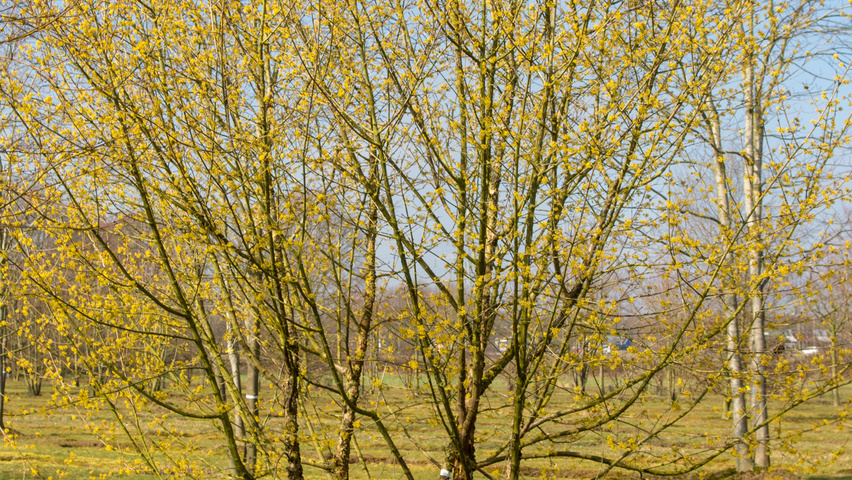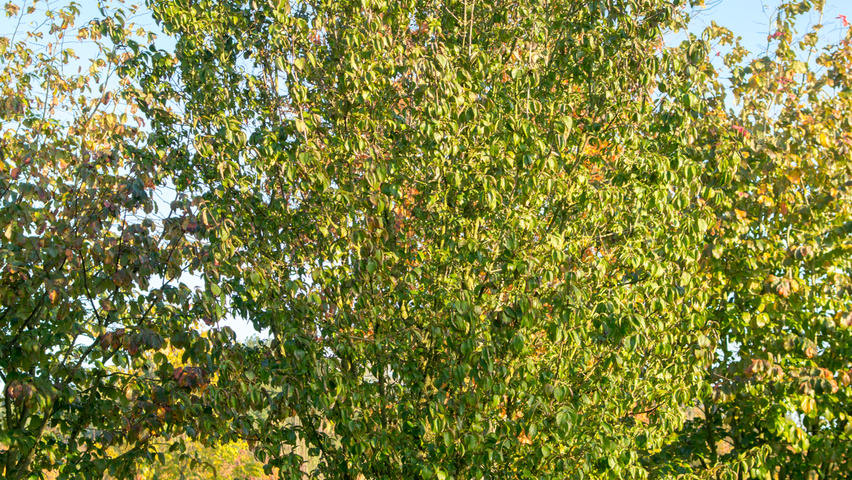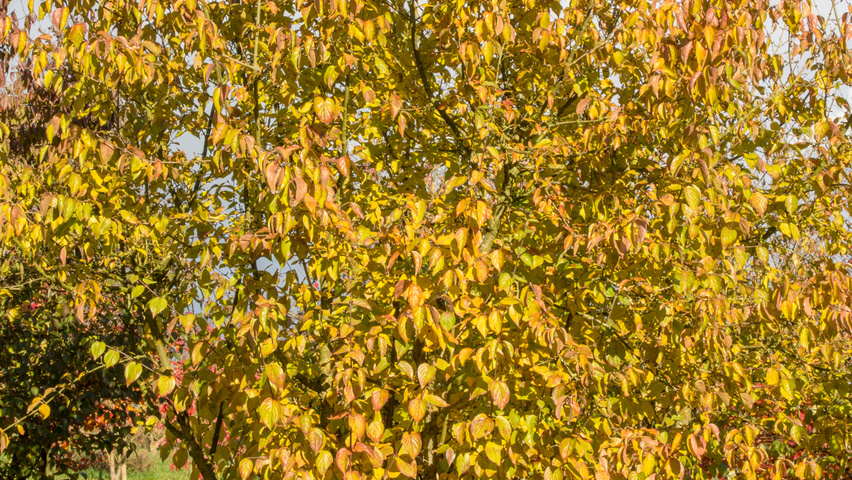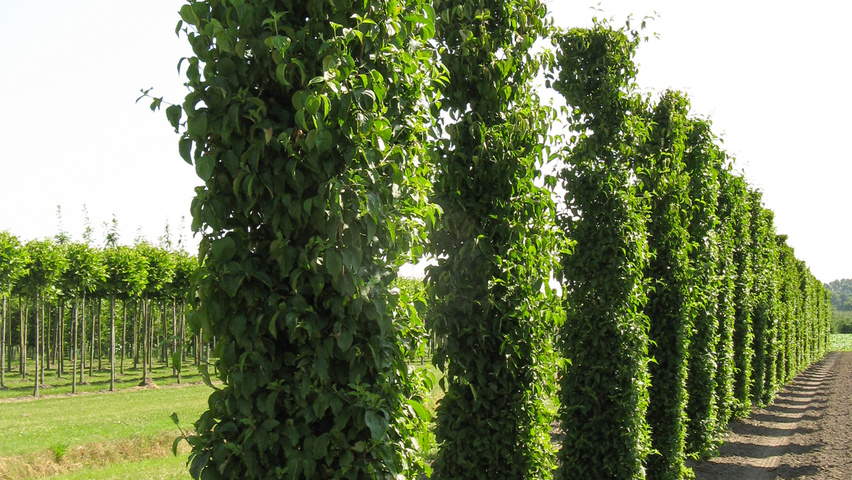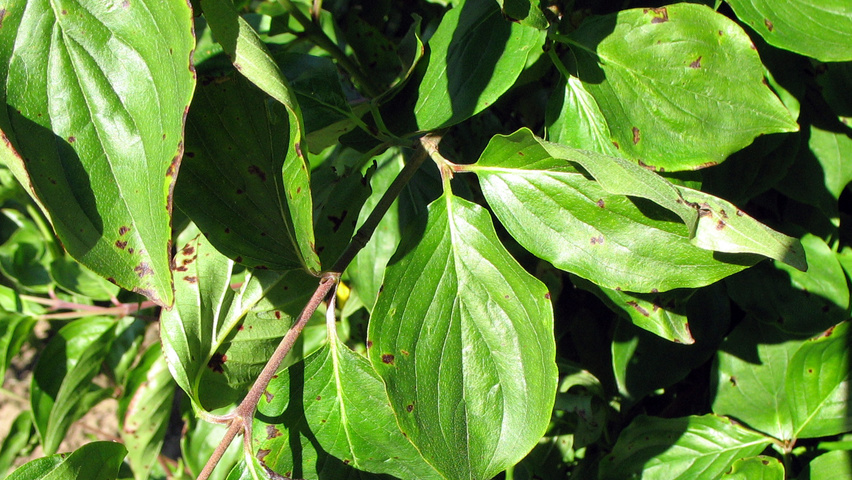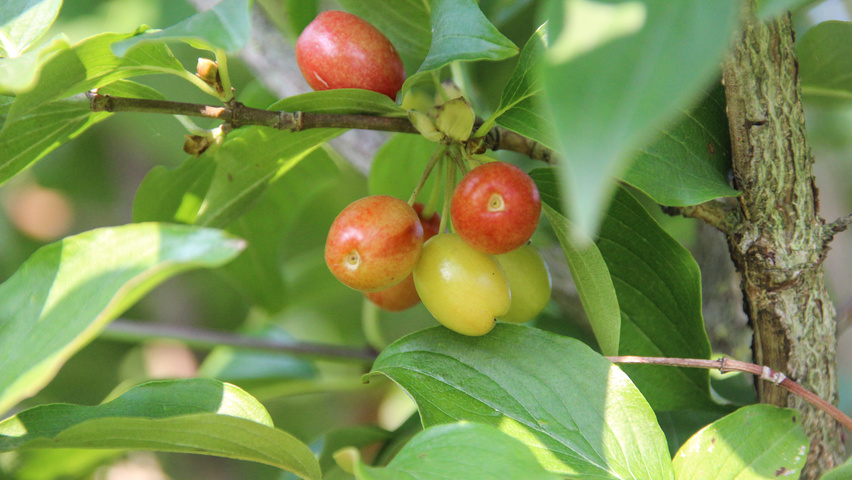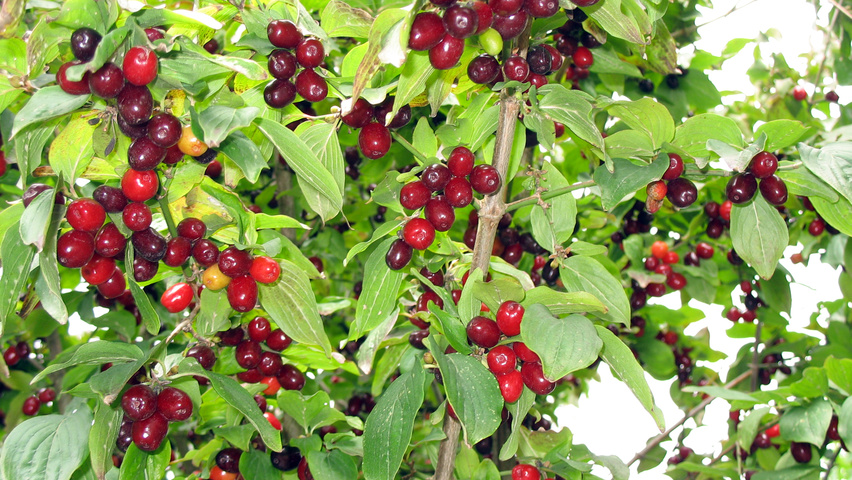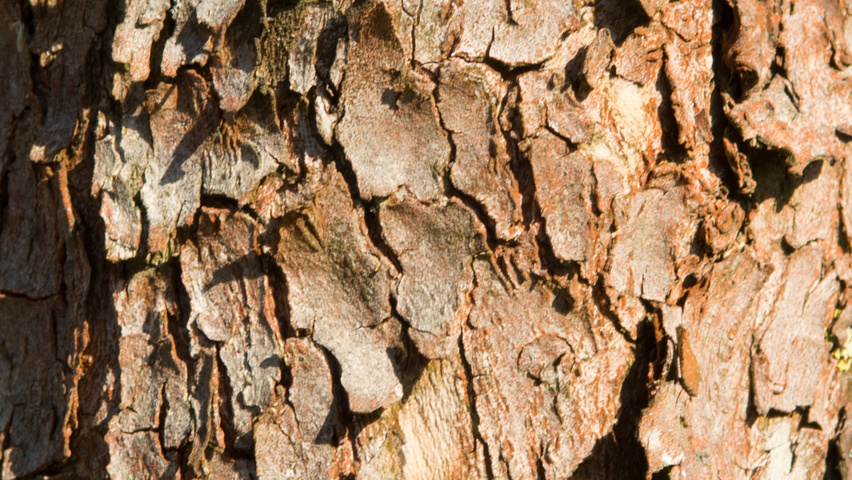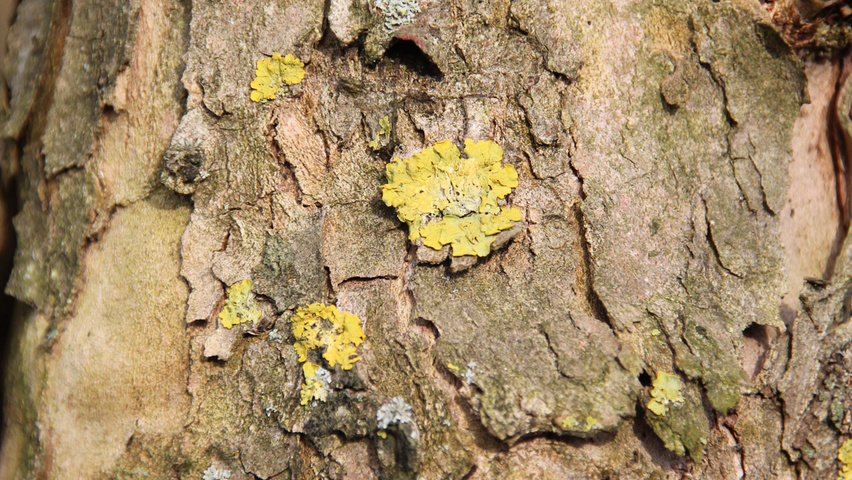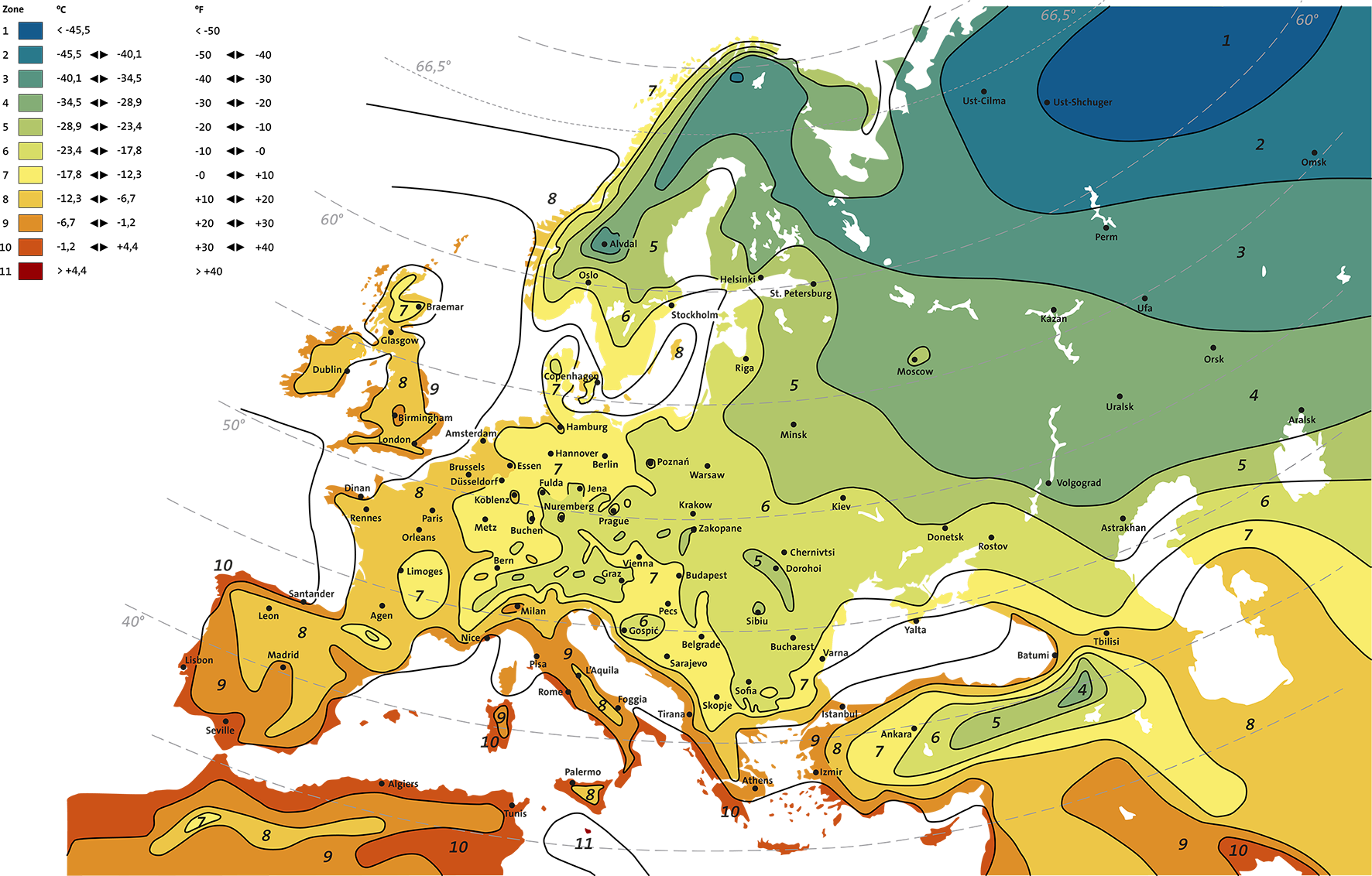Cornus mas (cornelian cherry) occurs naturally in Central to Southestern Europe, Asia Minor and the Caucasus, where it is part of the understory shrub layer of deciduous woodlands or rocky scrublands. It is associated with Quercus petraea, Quercus cerris, Fraxinus ornus and Ostrya carpinifolia. The cornelian cherry was first described by the Swedish botanist, Carl Linneus in 1753. This large shrub or small tree with a round crownshape could reach as high as five to seven metres, and five metres wide.
As an early, winter flowering shrub, Cornus mas is such a welcome sight on sunny February, early March days, especially when the lower branches are lifted higher up to let some light in and underplanted with early flowering bulbs. The yellow, small but numerous flowers are appearing before the foliage in late February-early March and covering the whole plant, supporting the early rising insects with pollen and nectar. The red berries are ripening in August and September and are also highly valuable to feed wildlife and could be used for culinary purposes. They have got a high content of vitamin-C and many other beneficial nutrients. Leaves are ovate, dull green then turning to beautiful yellow to orange in October when planted in full sun. The bark on younger plants is smooth brown-grey, later becoming highly ornamental turning to light brown and peeling off in small pieces.
Cornus mas is an ideal choice for medium to large gardens, public spaces, where it has space around to spread and grow into its natural shape. It is a slow growing but very long lived plant. It could be planted on any well draining soils even in very dry places and has amazing heat and drought tolerance. It could take hard pruning once established and resprout from the base. It is also a perfect hedging plant for informal hedges to bear some winter interest and also some fruits later on the season which could be foraged by wildlife and people too, if planted in a non-polluted place. The cornelian cherry could take the shade of deciduous woodlands, however it is happier on woodland edges in dappled shade or in full sun.


